Mentoring has proven to be a notable and powerful method for professional development. In fact, over 70 percent of Fortune 500 companies can cite the benefits, which range from improved productivity to employee job satisfaction.
Attracting, acquiring and retaining talent remain some of the biggest corporate challenges, but as many as 9 in 10 workers with a career mentor claim to be happier in their posts. It’s clear to see why, with improved performance, progression and higher earnings all attributed to employee development programmes.
Companies can reap the benefits too, with more engaged employees contributing to a more effective and efficient organisation. With five decades of research to reflect back on, it’s been proven that investing in people is a smart (and lucrative) business decision.
More specifically, the data continues to highlight the benefits of talent development programmes during particularly tough economic times. While the 2020 coronavirus pandemic significantly altered the global trade landscape, companies with mentoring programmes in place maintained good business, and Forbes reports that some noted a boost in profits by as much as 18 percent.
Adaptable, inclusive, and applicable to any type or size of organisational structure, mentorship is an impactful learning and development model poised to serve many professional outcomes – and one that continues to transform the workscape worldwide.
What are the 5 types of mentoring?
From virtual and flash to reverse mentoring, approaches to mentoring and coaching programmes are constantly evolving to meet current business needs. This non-exhaustive list serves to highlight some of the most notable and commonplace styles of knowledge exchange employed by companies to date.
One-to-one mentoring
The more traditional model, one-to-one mentoring is also the most common, comprising a mentor-mentee partnership and an individualised approach to professional development. Mentors with particular skills are matched with mentees who could benefit from their experience and expertise, and perhaps aspire to occupy a similar role within the company.
Typically a long-term relationship, nurtured over a designated period, the mentor lends time, guidance and positive reinforcement to the mentee, acting as an internal support network.
Examples of one-to-one mentoring in the workplace:
- Succession planning: Creating a talent pipeline through a business, succession planning serves to identify, grow and develop talent to fulfil leadership and business-critical positions in the future.
Group and team mentoring
Group mentoring, on the other hand, comprises one mentor working with several employees at the same time. It’s a cost and time-effective approach to upskilling with speed.
The group of mentees will typically have a commonality, whether that be a career goal or a blindspot in their skillset, which the mentor helps them achieve or overcome. The format fosters a supportive and inclusive environment by introducing a range of different perspectives and experiences, improving teamwork, collaboration and company-wide communication in the long-term.
While similar to group mentoring, team mentoring engages more mentors and mentees and is typically project-driven. Team mentoring can also work in the reverse, where a mentee is assigned several mentors of differing expertise to extend professional growth – particularly useful for priming and preparing future business leaders who require a more dynamic understanding of the organisation.
Examples of group mentoring in the workplace:
- Induction and onboarding: New starters need to be clued up on company culture, dialled in to key business demands and understand how their post is positioned within the wider organisation. Group mentoring is often employed when there are several new hires to hand, easing in new employees, getting them up-to-speed quickly and concisely, and serving to dissipate any interdepartmental silos that may act as barriers to networking.
Virtual mentoring
With remote working becoming ever-more commonplace, virtual mentoring has become a vital model in maintaining employee engagement and support, keeping workers on-task to meet their professional goals and ensuring employees remain up-to-speed with evolving role demands.
Otherwise known as ‘distance’ mentoring, typically apps or softwares are used to facilitate virtual communication between mentor and mentee or a wider team. It’s an inclusive model that works around accessibility challenges or other personal barriers, such as familial commitments or mental health, that continues to foster meaningful relationships and personal connections – even while both parties work from home.
Flash mentoring
While a standard mentoring relationship is nurtured over numerous months, flash mentoring aims to provide tactical one-time meetings, removing the burden of long-term time commitments.
With our competitive workplaces gaining pace and the demands on employees mounting, flash mentoring is a great method for imparting skills and expertise quickly and concisely to serve employees in their immediate future – whether that be preparing for a new post or overcoming a personal challenge.
Flash mentoring works well with other mentoring styles, such as an intense one-to-one session, or following a CPD structure, with expert-led lectures followed by group breakout sessions.
Examples of flash mentoring in the workplace:
- Upskilling: Expanding upon employee abilities and minimising knowledge gaps, upskilling sessions can quickly advance individual roles and help workers identify different opportunities within the company.
Reverse mentoring
Reverse mentoring turns the traditional model on its head, with a junior employee advising a more senior party. This knowledge exchange may be employed to close a skills gap, such as new tech or digitisation, or may comprise part of a diversity and inclusion initiative. Ultimately, even the most experienced managers among us still have plenty to learn from the next generation.
Reverse mentoring can also improve relationship dynamics, supporting a healthier hierarchical structure and eliminating any perceived power imbalance with employees meeting each other at the same level. In the long-term, this fosters a sense of value in the junior employee, while the senior can obtain a ground-level view of the workings of their organisation.
Examples of reverse mentoring in the workplace:
- Leadership development: While mentoring schemes serve to identify and develop new leaders, the reverse mentoring model shows that corporate programmes can also re-engage and improve existing ones. This sharing of challenges and experiences can lead to a more current and relevant understanding of skills, business demands and staff needs.
What are the benefits of mentoring?
Mentoring models are transactional by nature. The benefits are vast and far-reaching – and not only limited to the junior party. Both mentor and mentee can both gain immense value from a professional development programme, including improved opportunities for career progression.
In a 2020 survey conducted by Vistage, 86 percent of CEOs and business leaders
claimed that having a mentor was a critical component in achieving their career accomplishments, improving their proficiency, confidence and capacity to avoid costly mistakes. The reverse is true too, with many former mentors attributing their own career progression to their recognised contributions to the business.
Other well-documented benefits of mentoring programmes include:
- Improved goal-setting and renewed self-awareness
- Leadership skill development and improved communication
- Greater understanding of alternate approaches to work
- Ongoing access to confidential guidance and support
- Expanded network of colleagues
- Improved knowledge of different areas of the organisation
- Increased job satisfaction
- Service and ‘paying it forward’
The impacts of mentorship can extend beyond the immediate partnership too, making tangible improvements to the wider organisation, such as higher turnovers, better handling of workplace conflict and the fostering of a more inclusive, diverse and collaborative environment.
Others benefits cited by organisations with a mentoring programme in place include:
- Facilitation of the growth and development of high-potential leaders
- Demonstrable commitment to staff development and continuous learning
- Renewed ideas and perspectives for an adaptable and evolving business
Flex your own mentoring muscle with an MA Education
Become a transformational leader of the learning world with North Wales Management School’s online MA Education course, created specifically for teachers and trainers from all organisational backgrounds.
A series of curated modules, spanning critical and reflective practice, learning technologies and mentoring and coaching will dramatically improve your professional practice by raising standards, improving pedagogy and your ability to enhance the quality of learning and teaching through advanced professional activity.




